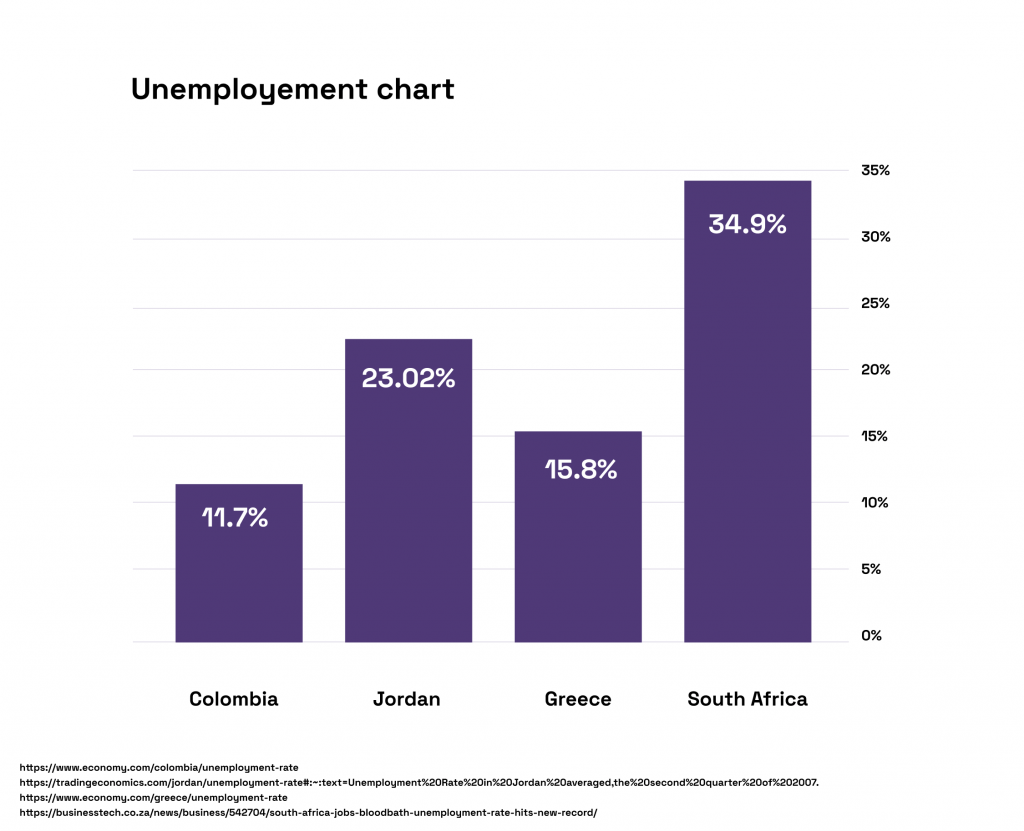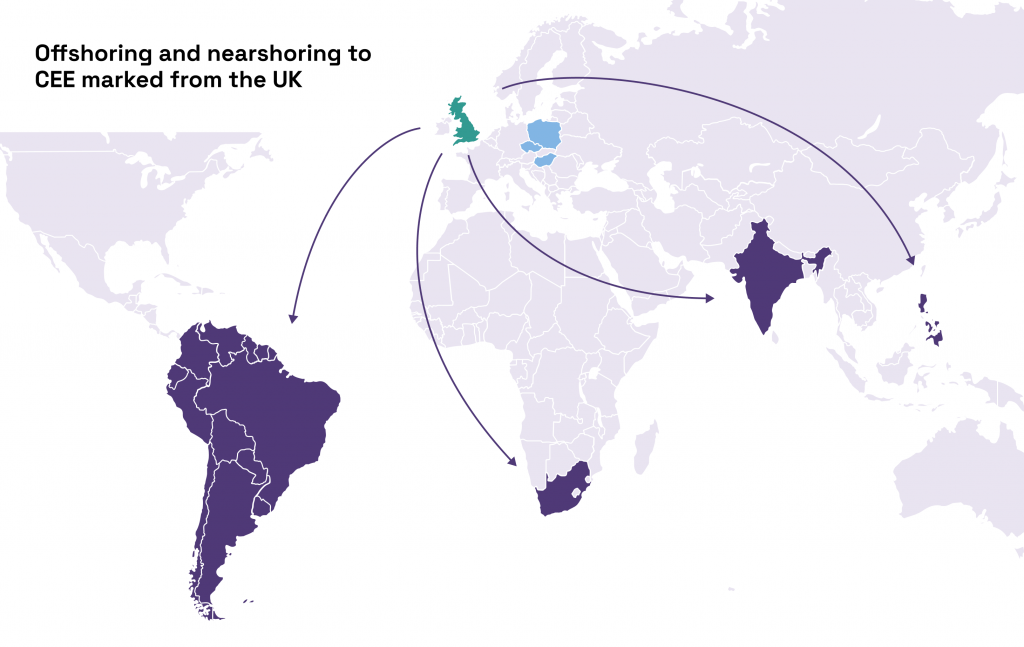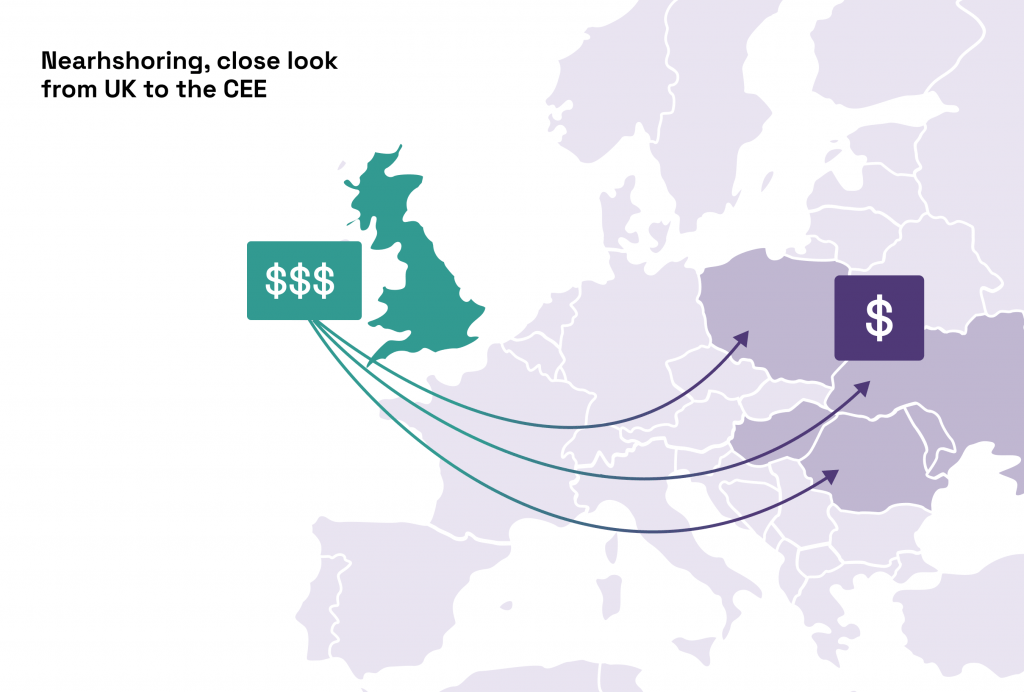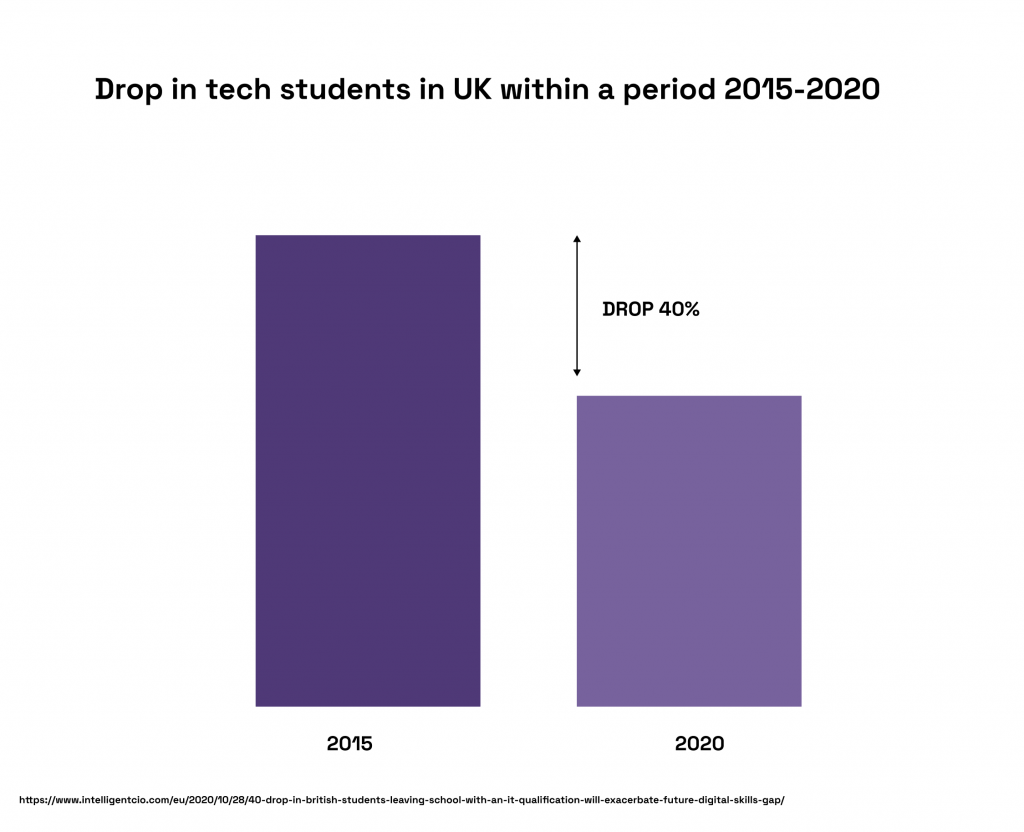
Kerry Hallard, CEO of the Global Sourcing Association (GSA) and Chairperson at Global Technology & Business Services Council (GT&BSC)
In conversation with

Agnieszka Porębska, VP, External Relations in Talent Alpha. Editor in Chief of the annual The Future of Work Report.
Agnieszka Porębska:
Thank you one more time for both being a speaker and a partner of the Future of Work Report 2021/22: The A3 Revolution: Anytime, Anyplace, Anywhere. A lot of our readers come from the business services sector and current changes in the workplace are hot topics for them. I’m delighted that you have the time to talk a little bit about the latest trends from the perspective of the outsourcing industry that you know so well as CEO of Global Sourcing Association and Global Technology & Business Services Council.
Outsourcing models have been established for a long time. However, clients now seem to be even more open to approaching talent from anywhere. But new challenges have emerged for both business process outsourcing and shared service centers. How would you describe the shape of the outsourcing market against the backdrop of COVID?
Kerry Hallard:
I think the global technology and business services industry has responded incredibly well to the challenges posed by the pandemic. As a result, we’re seeing the biggest economic boom that the outsourcing industry has probably ever experienced. At the moment, the sector is growing beyond any projections.
Agnieszka Porębska:
What is the rationale behind this growth?
Kerry Hallard:
It is mainly about everybody having to move into a much more cloud-based, digital-based, virtual-working from home environment. But companies have also realized that this digital world “works”, and they want to implement more and more transformations.
Agnieszka Porębska:
Is the sector prepared for such dynamic development?
Kerry Hallard:
In many aspects, yes. However, there is one big problem, namely the talent gap. There isn’t enough talent to deliver the programs which is why there is a war for talent. Tech engineers, software engineers, data analysts, cyber security experts; all of these people with IT skills, are in such high demand that we are seeing quite significant wage increases. One of our member firms from Poland reported that, this year alone, their software engineers had received a 35% pay increase. Some companies said software engineers are beginning to almost act like rock stars. They’re starting to pick and choose which IT projects they want to work on which is obviously going to be a major challenge for delivering tech projects. However, in complete contrast, if we speak to executives in South Africa, the country has a record breaking unemployment rate of about 35%. So we’ve got a massive supply and demand issue that we as a tech industry need to address with governments from all over the world.
Chart according to: https://www.aljazeera.com/economy/2021/8/24/south-africas-unemployment-rate-is-now-the-worlds-highest

Agnieszka Porębska:
It seems like companies are increasingly interested in nearshoring models – what is the reason for this trend?
Kerry Hallard:
Actually, it is rather a trend of strengthening the blended global footprint that we’re seeing. The businesses which had offshored a workforce to India still do and they are not going to change this practice. We can also experience an increase in customer service positions going to locations such as South Africa and Latin America. It means that companies are establishing operations in offshore regions although they still predominantly invest in nearshoring options.
Nearshoring is part of the harmonized operating mix. People want to build resilience into their business services and technology delivery. Enterprises have started to deploy projects and operations to different regions around the world to ensure that if there is another pandemic, they have built-in stability and resilience.

Nearshoring with a talent for technology is really strong in Central and East European countries such as Poland and Ukraine. From Great Britain’s perspective the region has great tech talent at much lower costs. It’s also not too far away, and there’s not much difference in time zones or respective cultures. These are the benefits that companies get from nearshore delivery destinations.

Agnieszka Porębska:
As we discuss in our report many companies, especially in tech, have started taking into consideration the possibility of hiring talent from Anywhere. We have already seen companies from Silicon Valley directly recruiting talent from Poland. What kind of impact will it have on outsourcing markets?
Kerry Hallard:
The service providers themselves are suffering. They can’t get access to enough tech talent to fill positions for the projects that they’ve sourced. As a consequence, they are opening and recruiting in different delivery destinations in countries they’ve not previously operated in.
Some enterprise customers are looking to carry out projects with their own resources. This approach is hampered by certain liabilities. Many of them still prefer the outsourcing model, which as a consequence, continues to steadily grow.
We’re seeing service providers and enterprise buyers, both using gig workers and open talent platforms to deliver projects. But I think the vast majority of open positions are still going through talent service providers as they will take the risk to deliver talent.
Moreover, talent providers undertake legal liability to ensure that everyone working via the talent marketplace pays the right taxes and obeys the local laws. You should comply with a certain set of regulations and it is specific knowledge. Of course, you can build your own team but I’m seeing a preference to actually outsource it to talent providers.
Agnieszka Porębska:
What further challenges does the A3 Revolution pose for employers?
Kerry Hallard:
Gig workers’ approach and work expectations have definitely started to have a greater impact on the recruitment industry. What the A3 Revolution has made visible is that people don’t want to be employed anymore. They want to have the freedom to do the projects that they themselves have chosen. Furthermore, these circumstances have triggered a vast war for talent.
This has led to enterprise buyers and service providers not being able to recruit fast enough as there’s a lot of people that just don’t want to be hired. Another major issue is that the UK market has experienced a massive drop in the number of students who want to study technology at school and continue this at university.
Agnieszka Porebska:
How serious is this problem?
Kerry Hallard:
The number of tech students dropped by about 40% between 2015-2020, so instead of more students wanting to study computing and technology, we’ve lost 40% of students.

Agnieszka Porebska:
These numbers are astonishing. What’s the reason for it?
Kerry Hallard:
I don’t know to be honest. Tech is not seen as being a sexy subject, it is regarded as geeky and akin to continually coding in a dark room. Obviously, it’s a really misconceived portrayal, but I think that this is the reason. The UK government has to do a significant amount of work to effectively promote digital skills in the country.
Agnieszka Porebska:
What could be done to bridge the talent gap and how can governments help to drive this change?
Kerry Hallard:
The essential response should be reskilling, and upskilling. I don’t think we’re doing nearly a good enough job. The national curriculum of the UK isn’t fit for purpose bearing in mind all of the ongoing changes. A significant investment in reskilling and upskilling is a necessity. Upskilling not just in terms of digital skills, that’s essential, but soft skills as well.
Moreover, AI is what I look to in the future. There’s some great AI out there that can look at data and predict the sort of skills the country is going to need if it’s to achieve the vision set out for the next five or ten years. It is all about the responsible adoption of these technologies, and reskilling those professions that are going to be displaced by automation. For example, accountants have been identified as having similar skill sets as data analysts and so we should actively be reskilling them now. All of these things are really, really essential for sustaining our workforce in the future.
Agnieszka Porebska:
Thank you very much. And let me thank GSA and GT&BSC for being partners of the Future of Work Report. We look forward to further cooperation in the future.


Read also
The Human Cloud Ecosystem - Re-Shaping the Business World
Although cloud service was already on the rise before the pandemic, it wasn’t a necessity for many of the people in the industry. What has changed since then?
How Cloud Technology Became More Human
Working remotely has never been as popular as it is now, clearly demonstrating that its perks outweigh its disadvantages. Read more about it here.
VIDEO: Bridge Your Tech Talent Gap Webinar
On Wednesday March 3rd, Talent Alpha hosted our webinar Talent Intelligence in 2021: Understand, Unlock & Unleash Hidden Value in Your Organization